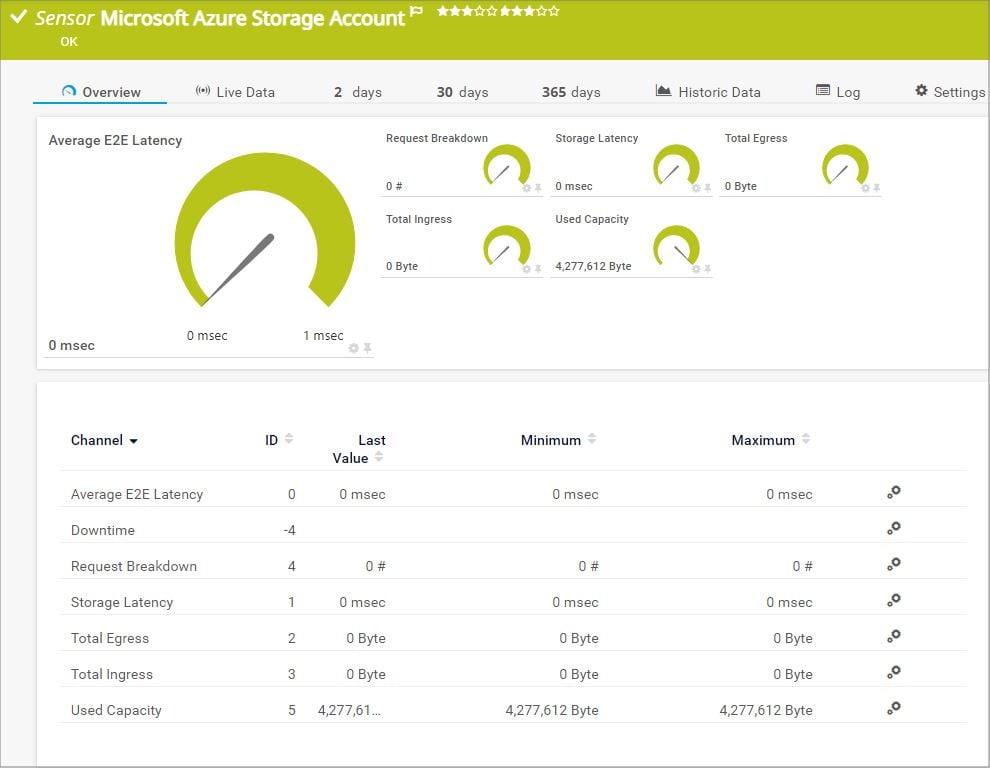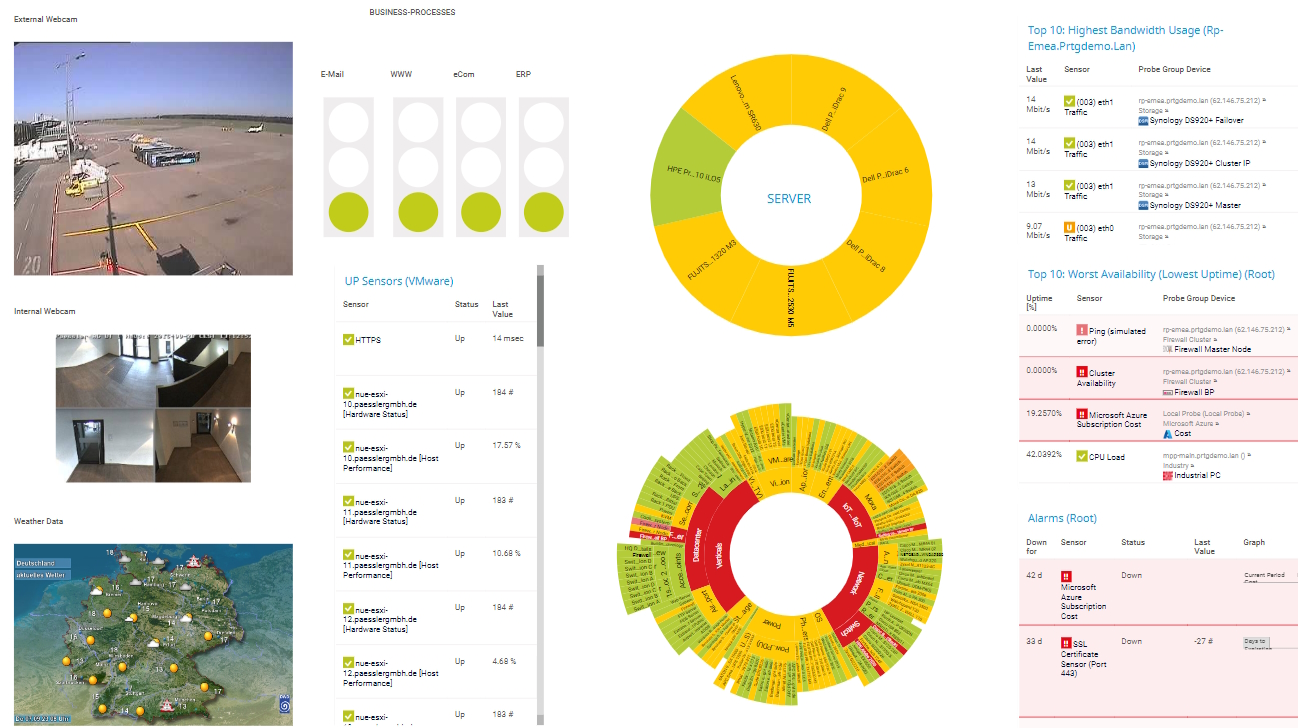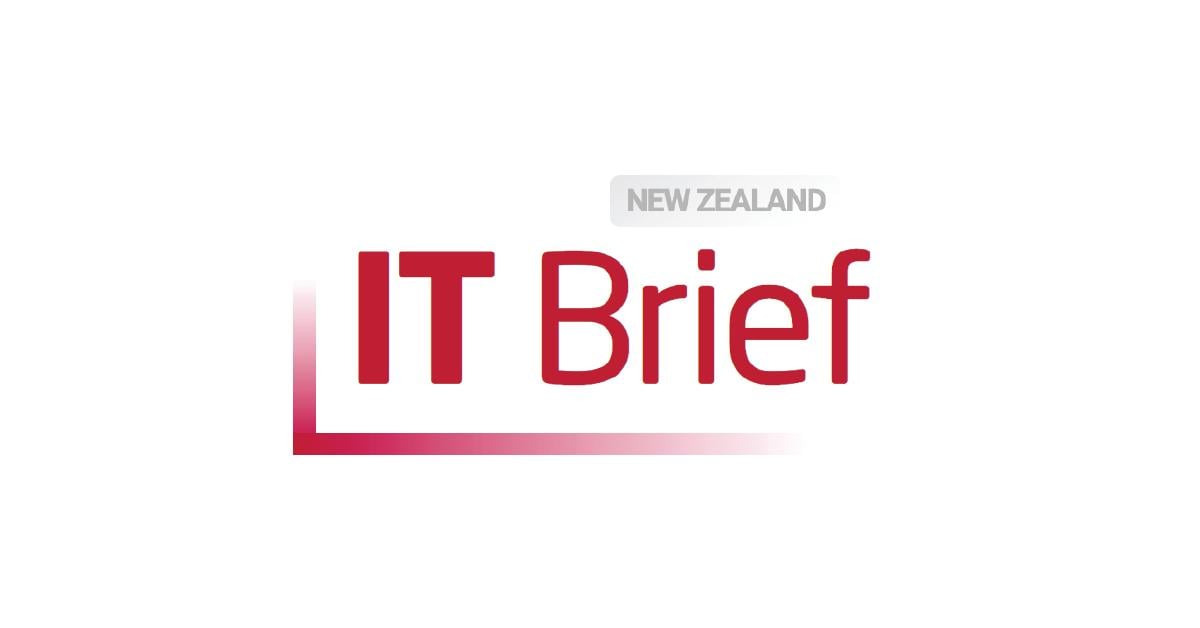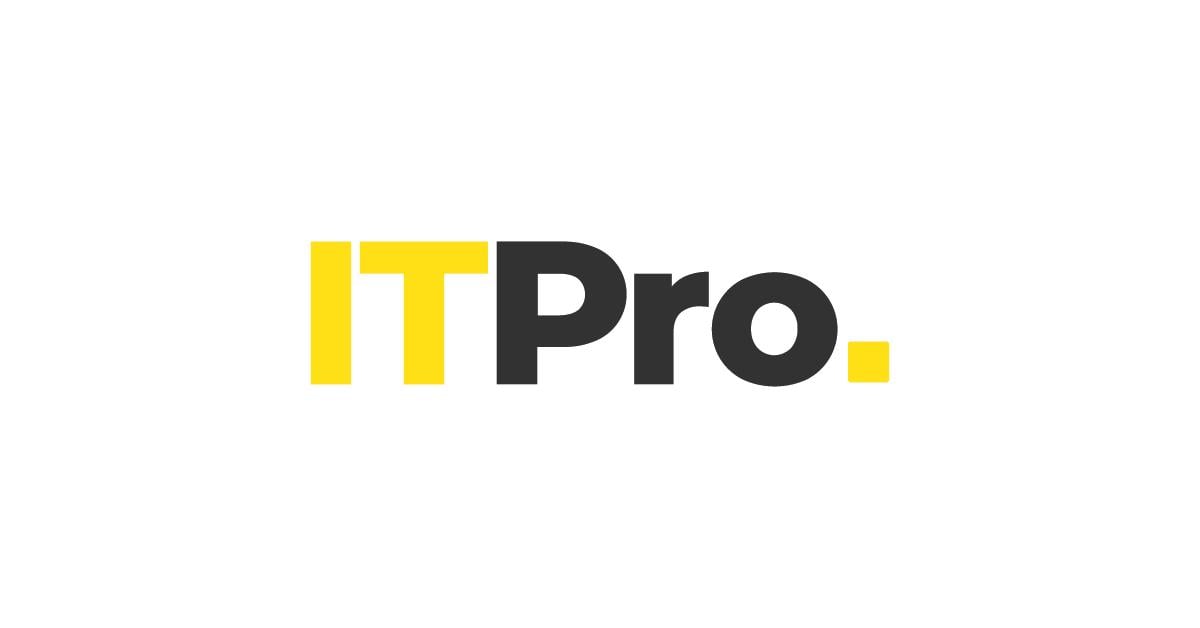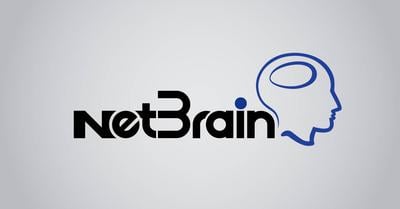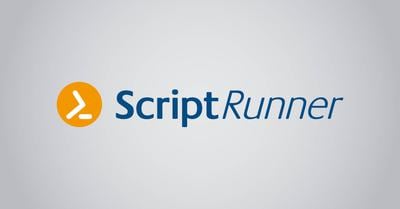Storage performance monitoring with PRTG
Easily spot performance issues & optimize storage capacity planning
- Ensure optimal performance of your storage systems
- Keep track of hard drives, cloud storage, databases, and more
- Get a 24/7 overview as well as detailed long-term statistics
PRTG storage performance monitoring: What you’ll find on this page
PRTG makes storage management as easy as it gets
Custom alerts and data visualization let you quickly identify and prevent storage performance bottlenecks.
4 reasons to use PRTG as your storage performance monitoring tool
Although most data storage devices have their own built-in monitoring system, they are limited to the devices’ functionality and don’t see the full picture. Paessler PRTG’s comprehensive, all-in-one network monitoring software is therefore critical to map your storage system as well as your entire IT infrastructure in a central overview.
Avoid costly downtime
PRTG helps you avoid negative business impact due to storage problems and even downtime of the complete system by monitoring all storage components 24/7.
This means monitoring hardware and application health and availability – and, sometimes even more important, performance.
Wide vendor compatibility
With PRTG, you can monitor hardware storage devices of the most popular manufacturers out of the box, for example Dell EMC, NetApp, HPE, IBM, Lenovo, Synology, QNAP, and Buffalo.
You run your storage infrastructure in the cloud? No problem. PRTG’s preconfigured sensors also include cloud service providers like AWS, Microsoft Azure, Google Drive, or Dropbox.
Comprehensive monitoring
Use PRTG to keep an eye on the performance of almost every hardware and software component in classic IT environments you can think of.
Switches, CPUs, servers, databases, backup software, virtual hosts – with our monitoring software, you can rest assured that your entire network is taken care of.
Custom alerts & notifications
Make sure your storage infrastructure monitoring is always targeted and aligned with the specific requirements of your network.
Set performance thresholds and let PRTG notify you via email, SMS, push notification, or other methods as soon as they’re breached.
What storage performance monitoring looks like in PRTG
Diagnose network issues by continuously tracking the performance of storage devices, storage arrays, storage pools, and other storage resources. Show response time, read/write speed, latency, throughput, CPU and memory usage, and other key metrics in real time. Visualize monitoring data in clear graphs and dashboards to identify problems more easily. Gain the overview you need to troubleshoot slowdowns and even outages in your storage environment.
Start monitoring storage performance with PRTG and see how it can make your network more reliable and your job easier.
All you storage performance key stats at a glance
Performance everywhere
Track the performance of all your storage components from one place: read/write speed, data traffic, bandwidth usage, CPU load, memory usage, storage capacity, and much more. PRTG monitors everything round the clock, showing you detailed stats in intuitive, user-friendly dashboards.
Notifications in real time
Nip potentially serious storage issues such as bottlenecks or low storage space in the bud. Pick your preferred warning and error thresholds, and PRTG will email, text, or send an in-app notification when you're at risk of going under or over, so you can fix them promptly and avoid disruption (and colleagues' complaints).
Proactive resource planning
Your CEO has big growth plans. But can your storage infrastructure support them? PRTG puts key performance data – live data or historical data of up to 365 days – at your fingertips, so you can spot where you're under- or over-resourced, and make better-informed choices on what storage devices, systems, and services to invest.
Complete customization
Your network, your rules. Tailor PRTG's powerful and flexible storage monitoring software so it meets your exact needs. Choose which storage components and parameters to track, and how PRTG presents the data. In fact, why not use our built-in, drag-and-drop map editor to design your own individual dashboard?
Your storage performance monitor at a glance – even on the go
Set up PRTG in minutes and use it on almost any mobile device.
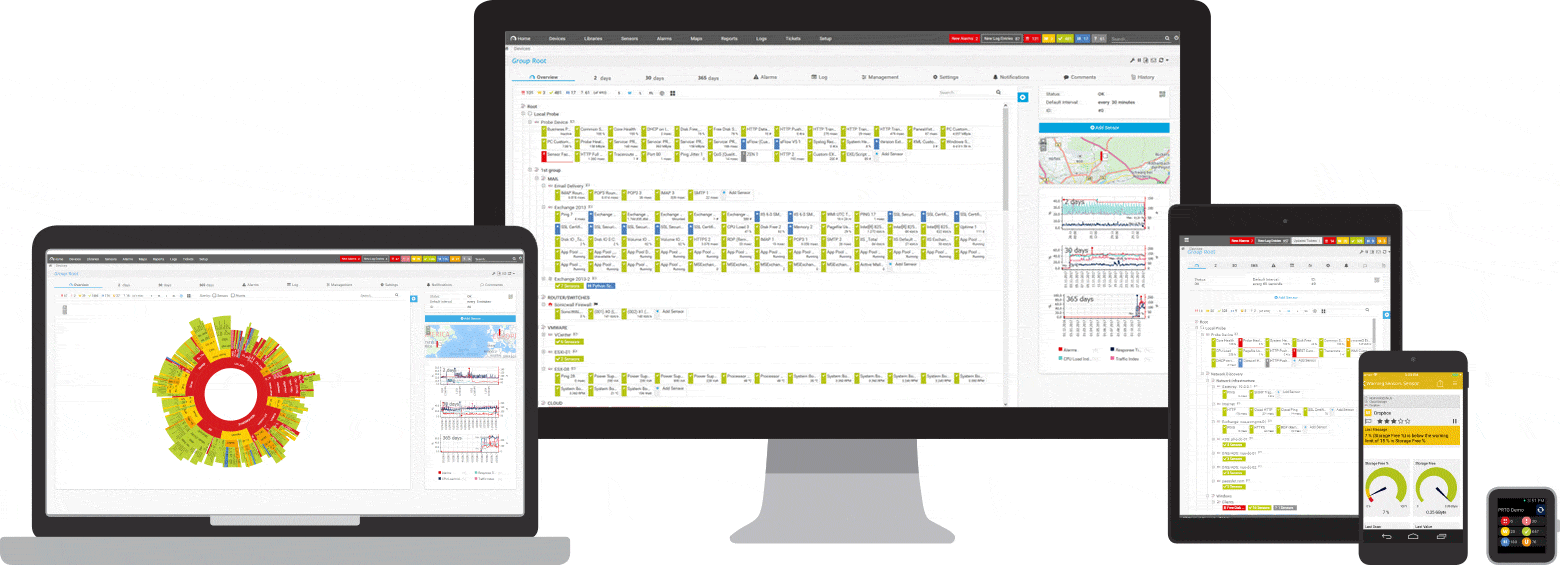

Find the root cause of the problem with our PRTG storage performance monitoring solution
Real-time notifications mean faster troubleshooting so that you can act before more serious issues occur.
PRTG is compatible with all major vendors, products, and systems
Explore our preconfigured PRTG sensors for storage performance monitoring
PRTG comes with more than 250 native sensor types for monitoring your entire on-premises, cloud, and hybrid cloud environment out of the box. Check out some examples below!
Create innovative solutions with Paessler’s partners
Partnering with innovative vendors, Paessler unleashes synergies to create
new and additional benefits for joined customers.
ScriptRunner
With ScriptRunner, Paessler integrates a powerful event automation platform into PRTG Network Monitor.
“Excellent tool for detailed monitoring. Alarms and notifications work greatly. Equipment addition is straight forward and server initial setup is very easy. ...feel safe to purchase it if you intend to monitor a large networking landscape.”
Infrastructure and Operations Engineer in the Communications Industry, firm size 10B - 30B USD
PRTG makes storage management as easy as it gets
Custom alerts and data visualization let you quickly identify and prevent storage performance bottlenecks.

PRTG: The multi-tool for sysadmins
Adapt PRTG individually and dynamically to your needs and rely on a strong API:- HTTP API: Access monitoring data and manipulate monitoring objects via HTTP requests
- Custom sensors: Create your own PRTG sensors for customized monitoring
- Custom notifications: Create your own notifications and send action triggers to external systems
- REST Custom sensor: Monitor almost everything that provides data in XML or JSON format
We asked: would you recommend PRTG?
Over 95% of our customers say yes!
Paessler conducted trials in over 600 IT departments worldwide to tune its network monitoring software closer to the needs of sysadmins.
The result of the survey: over 95% of the participants would recommend PRTG – or already have.
Still not convinced?
More than 500,000
sysadmins love PRTG
Paessler PRTG is used by companies of all sizes. Sysadmins love PRTG because it makes their job a whole lot easier.
Monitor your entire IT infrastructure
Bandwidth, servers, virtual environments, websites, VoIP services – PRTG keeps an eye on your entire network.
Try Paessler PRTG
for free
Everyone has different monitoring needs. That’s why we let you try PRTG for free.
Start monitoring storage performance with PRTG and see how it can make your network more reliable and your job easier.
|
PRTG |
Network Monitoring Software - Version 25.1.104.1961 (April 7th, 2025) |
|
Hosting |
Download for Windows and cloud-based version PRTG Hosted Monitor available |
Languages |
English, German, Spanish, French, Portuguese, Dutch, Russian, Japanese, and Simplified Chinese |
Pricing |
Up to 100 sensors for free (Price List) |
Unified Monitoring |
Network devices, bandwidth, servers, applications, virtual environments, remote systems, IoT, and more |
Supported Vendors & Applications |
|


